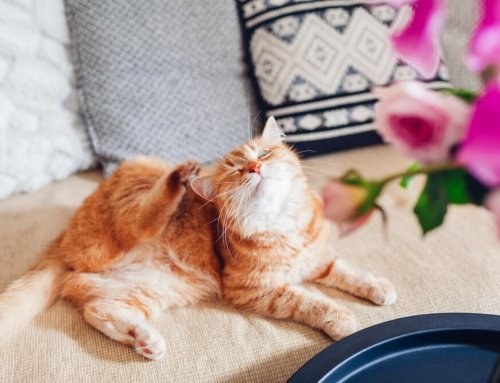Losing weight is never easy, whether you are a cat, dog, or person. To prevent your furry pal from needing to lose weight, keep them at an ideal body weight from the beginning. Maintaining a healthy weight can be challenging, but the health benefits are endless. Pets who are overweight or obese are at increased risk for developing diabetes, hypothyroidism, Cushing’s disease, osteoarthritis, some cancers, and much more. On the other hand, keeping your pet lean will add years to their life, as shown by a study conducted by Purina. To help your four-legged friend live their best life, follow these tips for managing your pet’s weight.
#1: Learn to evaluate your pet’s body condition score
While the number on the scale is a great starting place for determining your pet’s weight, their body condition score (BCS) is much more valuable. Same-breed pets can significantly vary in size, and mixed-breed pets have no set weight, regardless of known parentage. A body condition evaluation is a better determination of your pet’s health. When you evaluate your pet’s body condition, you look at your specific pet without comparing them with a breed standard. A pet at an ideal body condition should have ribs that you can easily feel and a waistline that is clearly visible from above and tucks up into the pelvis when you look from the side. Your pet’s BCS can better help you determine if your pet is over- or underweight.
#2: Determine the calories your pet needs each day
If your pet needs to lose weight or struggles to maintain a healthy weight, knowing how many calories to feed them daily can help. While dumping a scoop or two of food into a dish or filling the dish completely is easy, calculating the total number of calories your pet needs each day and dividing that number into meals is more important. Use a basic calorie calculator for your cat or dog to estimate how many calories your pet needs. Then, check how many calories are in a portion of your pet’s food. Use these numbers to determine how much food should be in each meal to reach the desired daily calorie allotment.
#3: Opt for healthy treats
Treats should take up no more than 10% of your pet’s daily calorie intake. You can stretch those calories by offering healthy options rather than commercial treats, which are often high in fat, sugar, and calories. Try the following healthy snacks for your pet:
- Lean meats (e.g., chicken breast, turkey, salmon)
- Broccoli
- Baby carrots
- Squash
- Green beans
- Berries
- Melon
- Apples
You can offer your pet unseasoned, boneless, skinless meats in bite-sized morsels, and fruits and vegetables in moderation.
#4: Encourage your pet to work for their food
Help your pet maintain their ideal weight by pushing them to burn calories as they eat—for example, ditching the food dish and switching to food puzzles to portion out your pet’s meals will not only boost physical activity, but also improve enrichment and provide mental stimulation. You can design your own food puzzles from cardboard boxes and tubes, crumpled paper, fabric scraps, and plastic bottles, or purchase a variety of interactive puzzles. Swap them out regularly to keep your pet from getting bored once they have figured out how to reach their meal.
#5: Exercise daily with your pet

While a balanced, correctly portioned diet is key to your pet’s weight management, regular daily exercise is equally important. Lack of activity means your pet likely will consume more calories than they burn, and those excess calories can quickly turn into extra pounds. Exercise with your pet each day, starting with short sessions and working up to longer periods. For example, your dog may only comfortably handle a 10-minute stroll around the block at first, or your cat a brief chase session with a robotic mouse, but over time, they will gain stamina and be able to exercise longer, further increasing their calorie-burning power.
In some cases, pets fail to lose weight or maintain a healthy body weight, despite their owners’ best efforts. If your pet is struggling to lose weight, they may have an underlying metabolic or endocrine disorder that is sabotaging your efforts. Contact our 360 Pet Medical team for an appointment to discuss your pet’s diet and weight management.








Leave A Comment